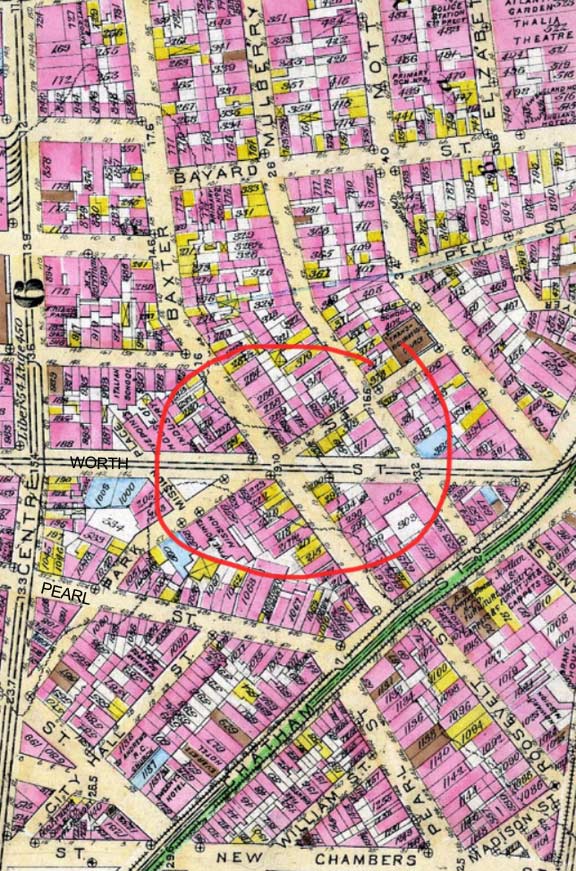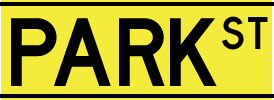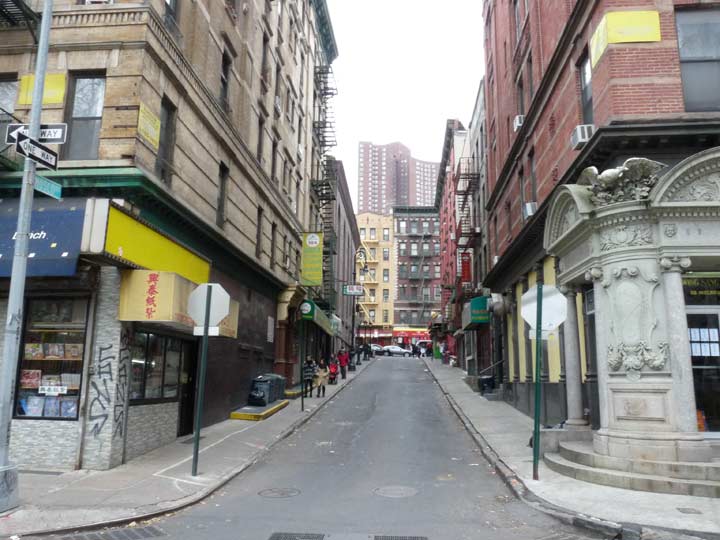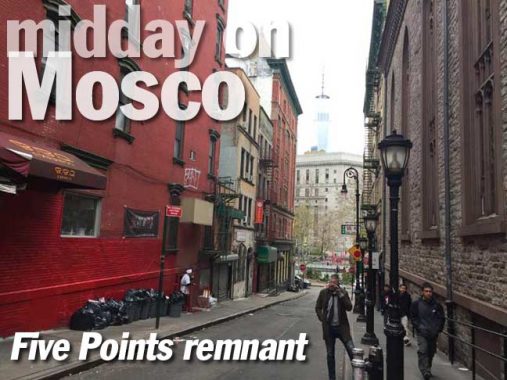
The other day when I posted my Mulberry Street page I touched on Mosco Street, which runs for a block between Mulberry and Mott, a block north of Worth. I have long been fascinated with it as I am with all of Manhattan’s short streets, which are often remnants of something much bigger; for example, in Manhattanville, the two remnants ascribed the title “Old Broadway” are remnants of the old, unstraightened Bloomingdale Road.

Consulting the 1885 map shown here, Park Street once ran a full 5 blocks, from Centre and Duane northeast to Mott Street, with only the easternmost block still there. A couple of streets are still there, though renamed; Chatham is East Broadway, while City Hall Street exists in a shortened form as Cardinal Hayes Place. New Chambers, the north end of William, and Roosevelt have been replaced by housing projects. NYC is a rapidly evolving entity, and the 2018 map will be unrecognizable by say, 2200, if Manhattan isn’t under water by then.

In 1982, the remaining stretch was named for community activist Frank Mosco, who was associated with the Church of the Transfiguration on Mott Street and involved himself with youth outreach, lower-income housing and the elderly, and organized the Two Bridges Little League.
#28 Mulberry, on the southeast corner, is currently the Wah Wing Sang Funeral Home, but the intricately carved eagle on the corner gives it away has having been something grander at one time. It is the former Banca Italiana, which opened in 1888; it gained the eagle in 1911, when Columbus Park opened across the street, as owner Antonio Cuneo considered it an important occasion deserving of the addition.
The northeast corner building is #30 Mulberry, where Frank Mosco lived. Mosco was aware that the city was going to name either the street or Columbus Park for him, and chose the street, considering it the humbler choice.
The Department of Transportation has always been inconsistent about street names and subnames. Were Park Street honoring Mosco in 2018, in all likelihood the street would have kept its Park Street signs and a Frank Mosco Street sign would have been added beneath it. Gil Tauber’s Old Streets site has a list of Honorary Streets where the DOT has done it like this.
I just took a walk in Harlem. While 7th and 8th Avenues have been completely renamed for Adam Clayton Powell, Jr. and Frederick Douglass, respectively, the DOT slaps subname signs on 125th Street and Lenox Avenue, where Dr. Martin Luther King, Jr. and Malcolm X have to settle for separate signs under the main signs.
However, a couple of years ago, in south Jamaica, the entire length of South Road was renamed Tuskegee Airmen Way, a group of African-American military pilots who fought in World War II, forming the 332nd Fighter Group and 477th Bombardment Group in the US Army Air Force (the Air Force was a division of the US Army during WWII). In 1981, Stone Avenue in East New York was completely renamed for a prominent neighborhood figure, (Rosetta) Mother Gaston, though the DOT initially missed a couple of signs.
104 Mosco Street is the longtime home of the Bangkok Center Grocery, with an awning sign in the Thai language.
103 Mosco, apartment building with a florist on the ground floor.
Now the Greater Chinatown Community Association, 105 Mosco is bedecked with Catholic Church iconography. When built in 1924, it must have been an adjunct of the nearby Church of the Transfiguration.
The Church of the Transfiguration, Mott Street at Mosco, is the heart of Catholic Chinatown.
It is the oldest Catholic Church building in the city, but not the oldest Catholic parish church. It was built in 1801 as the Zion English Lutheran Church and became a Catholic church in the 1850s; St. Peter’s, at Church and Barclay Streets, is the longest-standing Catholic church that’s always been Catholic.
ForgottenFan Dominick Fallucci: From my childhood (early 1960’s) until about the late 1980’s, Park Street ran from Mott Street to the intersection of Baxter and Worth Streets. My mother grew up at 95 Park Street, which was torn down along with the other tenaments on that block about 1961. I believe they were going to build another “urban renewal” project which didn’t pan out. For years until Columbus Park was extended to demap Park Street, that side of the street was a parking lot.
Mosco Street from Mott, looking west toward 60 Centre Street and beyond it, One World Trade Center. This is enough of a downhill to attract sledders in the winter, and the local kids called it Suicide Hill.
Mosco is illuminated by just one Bishop Crook but some NYC Parks-style type B’s surround the church.
Proof of Mosco Street’s old name at Mott Street. Photo: Robert Mulero.
Check out the ForgottenBook, take a look at the gift shop, and as always, “comment…as you see fit.”
12/19/18
